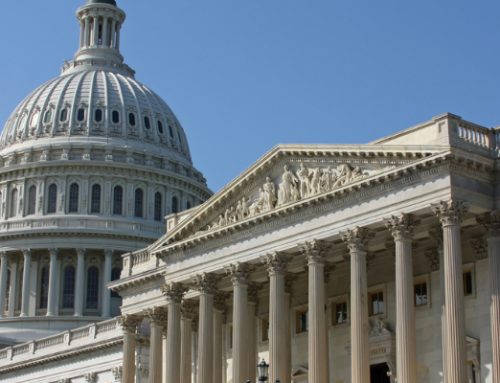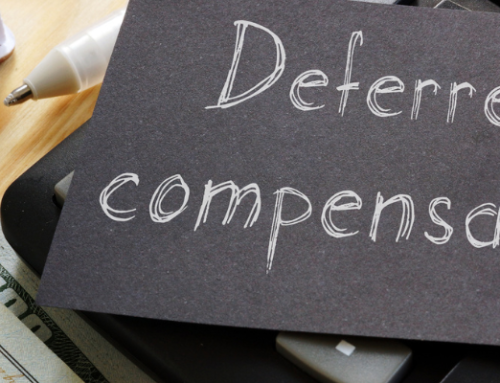Everywhere we look, prices are rising. Businesses that maintain inventory have been challenged to manage many unknown variables of procurement strategy for two years, and now also have inflation to deal with. The current and expected future inflationary environment may create a revenue opportunity for certain inventory-based businesses, though.
The last-in, first-out (LIFO) method of accounting for inventory can produce substantial tax savings, and it might not be too late to take the LIFO election for the 2021 (if you received or plan to receive an extension) or 2022 tax year. There are several considerations and a conversation with a tax advisor is necessary to determine if your business is an ideal candidate to make a LIFO election.
What is LIFO?
Efficiently managing inventory is critical to control costs, profits, and tax liability. Depending on which cost accounting method is used, inventory value and subsequent measures of value on the financial statements can change, even with the same products and materials.
Companies that maintain inventory have four different options to account for inventory costs:
- Weighted average,
- Specific identification,
- First-in, first-out (FIFO), and
- Last-in, first-out (LIFO).
The best cost accounting method depends on many factors, especially industry, business type, what kind of inventory is maintained, and how inventory is sold. There is no single correct answer as to which method will generate the highest cost efficiency, though there are advantages to each one. And the economic climate makes a big difference.
LIFO has been used since the 1930s but still is an underutilized cost accounting method for many businesses. LIFO expenses the most recent inventory as it’s purchased or produced. As such, it measures current inventory costs against current revenue to produce a more accurate current profit margin. LIFO is heavily tied to inflation and can often generate significant cash flows through a tax deferral strategy during periods of high inflation.
The current tax savings generated from LIFO is often referred to as an “interest-free loan” from the IRS as the tax savings is a temporary timing difference. The tax deferral will eventually have to be paid or reversed as either inventory levels or costs fluctuate, or the inventory is liquidated, often as a result of the sale of all the business assets in an asset acquisition or liquidation.
Inflation and Its Impact on LIFO
Inflation is the key factor when companies are looking at potential tax savings using a LIFO election. Because of inflation, the LIFO method reduces income and by extension, taxes.
Inflation is currently the highest it’s been since the early 1980s. Over the past year, the consumer price index (CPI) rose 7.9 percent. The core CPI, which excludes food and energy prices, even increased by 6.4 percent over the last year.
The current economic environment is partly expected due to months of labor and supply shortages related to COVID-19. Most recently, inflation measures in February were attributed to higher prices for food, gas, and housing. Costs for used vehicles are up 41 percent compared to last year; food is eight percent higher, and housing is up more than four percent.
The current war in Ukraine will continue to squeeze fuel costs and further drive up inflation in the near- to middle-term. The Fed is expected to raise interest rates at least three times in 2022, leading many to argue that inflation will get worse before it gets better.
And while higher costs are unwelcome news for most Americans, for some businesses, higher product costs are a unique opportunity to save money through pursuing a LIFO election.
When to Elect LIFO
There can be several advantages to making a LIFO election, especially:
- Tax savings
- Higher current cash flow resulting from the tax deferral
Timing is critical. The best time to make a LIFO election is when inflation is consistently above one percent annually, the company expects to report a current year profit, and a substantial drop in inventory isn’t expected in the next period. Adding to inventory reserves is also another point in time to consider electing LIFO.
Electing LIFO when the company is expected to report a loss or a drop in inventory could potentially have a negative effect.
Other factors may make a LIFO election impossible, or at least less advantageous. LIFO is only recognized by GAAP in the United States, and IFRS prohibits it as an available method of cost accounting. Businesses with inventory that issue financial statements in accordance with IFRS standards are prohibited from utilizing a LIFO election. There is also a strict IRS conformity reporting requirement that requires LIFO to be used for both tax and financial statement reports that are provided to investors, lenders, and creditors. So a business is not able to elect LIFO only for their tax return reporting.
LIFO, by its nature, reduces net income; this is helpful when costs are rising, but makes less sense if business owners and investors are primarily looking for a higher earnings per share or higher business valuation.
Investors considering a sale of the business in the very near future will also likely not want to consider a LIFO election as the timing of the tax deferral benefits will be limited due to a possible inventory liquidation. The greatest cash flow benefits from electing LIFO comes from a longer tax deferral period through utilizing the “interest-free” loan.
The decision of when to elect LIFO should be evaluated closely as there are many important financial and reporting factors to consider along with the future exit strategies for the business owners.
Which Businesses Should Use LIFO?
Considering the inflationary environment, there are a few other characteristics that would make a business a good candidate for a 2021 LIFO election.
A business should have a minimum inventory value of at least $1 to $5 million, as the largest LIFO benefits are for businesses with much larger inventory balances.
Beyond that, there are several industries that typically lend themselves well to a LIFO election.
- Retail: Especially discount, grocery, and convenience stores. Inflation in grocery store products, tobacco, and fuel all average at least two percent inflation over a ten-year period.
- Agriculture: Especially machinery and equipment and agriculture supply stores.
- Transportation: Especially heavy-duty trucks, recreational vehicles, and auto dealers/auto parts.
- Construction: Especially machinery and equipment, building products, hardware, concrete, sand, gravel, crushed stone
- Manufacturing and Wholesale: Especially alcohol, soft drinks, and beverages, food, pumps, compressors, and equipment
- Plumbing and HVAC: Especially equipment and supplies
- Furniture and home furnishings
- Lumber and wood products
- Metal: Ferrous and non-ferrous
How to Elect LIFO
To make a LIFO election for the 2021 tax year, a business must file Form 970 with their 2021 federal tax return, either by the due date in March or April assuming a December year-end or, if the return is extended, by the extended due date in September or October of 2022. Both the 2021 tax return and the financial statements will be affected in the first year the election is made, so any GAAP-prepared 2021 financial statements will also need to reflect the new LIFO accounting method for 2021.
To make a LIFO election for the 2022 tax year, a business would file Form 970 with their 2022 federal tax return due next March or April, assuming a December year-end. However, the business does not have to wait until next year to start preparing or evaluating the LIFO calculations and can proceed with the initial calculations now well in advance of the filling of the LIFO election. It is never too early to start exploring the available 2022 LIFO options.
The Form 970 election will identify what inventory pools or categories are electing to use LIFO, what inventory categories are not electing to use LIFO, and what LIFO method will be used for the inventory pool(s), such as specific goods, dollar-value, or using a published inventory price index.
Once a LIFO election is made, it cannot be revoked until the IRS approves another change in accounting method – again, achieved by filing an application with the year-end tax return. If a business revokes its use of LIFO in a future year, it cannot re-elect LIFO for at least five years.
Again, timing the market matters as a business is not allowed to switch from LIFO to another more advantageous inventory method in a tax year if the inflation levels change that year or using LIFO results in a tax increase in that particular year; so, no switching back and forth each tax year to an inventory method that allows for the greatest tax savings for that particular year.
In the event a business does decide to revoke their LIFO election, the outstanding LIFO reserve is recognized as income spread ratably over four tax years starting with the year of the revocation.
A business has several LIFO calculation methods to choose from to value inventory throughout the year. One option to maximize LIFO savings is to use the relatively simple Inventory Price Index Computation (IPIC) method, which uses readily available Consumer or Producer Price Indexes as a measurement tool that can be customized by the business for their particular industry.
Businesses already using LIFO can switch to the IPIC calculation method for tax purposes while using another LIFO method for their GAAP financial reporting. A PBMares tax advisor can help identify which LIFO method option to use based on your unique inventory characteristics and provide guidance on how to use them.
What to Do Next
The deadline to make the election for 2021 is quickly approaching, and businesses will need to coordinate with both their tax and audit teams well in advance of the tax filing due date, including extensions. With prices rising their highest in 40 years and not expected to go down anytime soon, now could be an excellent time for businesses with large inventories in certain industries to elect LIFO and save on taxes for 2021 or 2022.
PBMares clients interested in potentially making a LIFO election for 2021 or 2022 should schedule a call with Charles Dean Smith, Jr., CPA, Tax Team Partner, as soon as possible.





